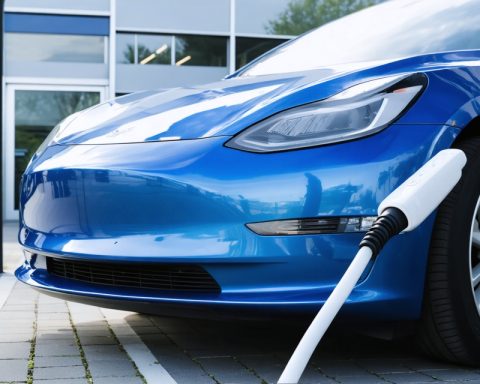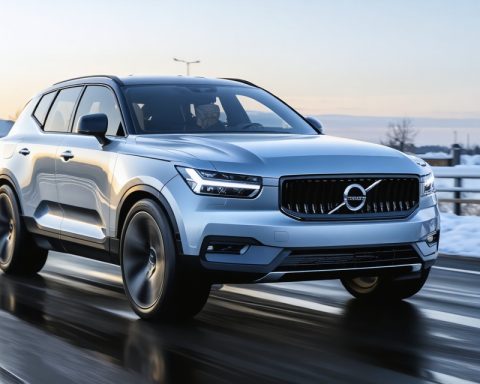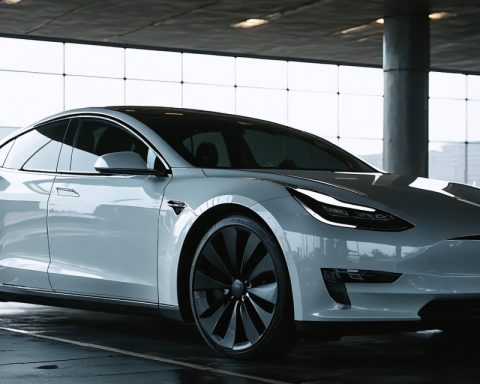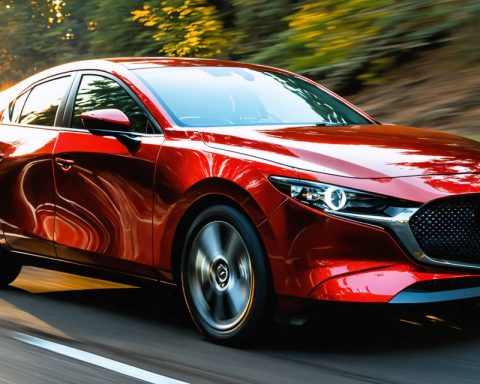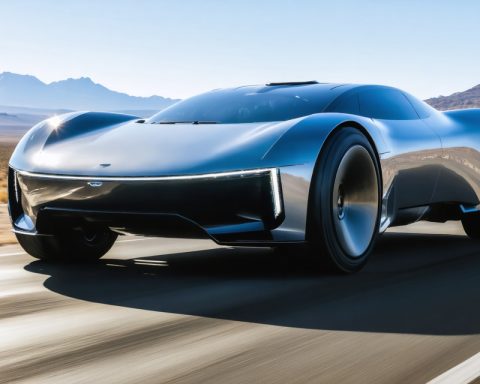- Waymo plans to launch its autonomous Waymo One robotaxi service in Washington D.C. by 2026.
- Washington D.C. is part of Waymo’s broader expansion, following upcoming rollouts in Atlanta and Miami by 2025.
- Waymo emphasizes safety, consistency, and convenience, ensuring rigorous collaboration with local legislators for a smooth transition.
- With over 200,000 fully autonomous rides weekly, Waymo is already a significant player in the autonomous vehicle landscape.
- The competition intensifies with Tesla preparing to launch its autonomous fleet, driven by its Full Self-Driving software.
- This move marks a significant step in urban transportation, promising to integrate autonomous vehicles into daily life.
Amidst the hustle of America’s capital, Waymo is charting a course toward an autonomous future. In a spirited announcement, the tech giant revealed its plan to introduce its self-driving cars to the streets of Washington D.C. in 2026, expanding the reach of its robotaxi service, Waymo One. This eagerly awaited deployment aims to make seamless, driverless travel a reality for the throngs who traverse the nation’s capital.
Waymo’s adventure into the world of full autonomy is nothing short of an audacious leap into the future. The company, a leader in autonomous vehicle technology, is paving the way for a transportation revolution. The move to Washington D.C. marks yet another milestone in its journey, following recent rollouts planned for Atlanta and Miami in 2025. Harnessing the power of cutting-edge innovation, Waymo One promises to blend safety, consistency, and convenience like never before.
As the wheels turn towards the capital, Waymo remains committed to working hand-in-hand with local legislators to ensure the transition to driverless travel is smooth, adhering to stringent safety and regulatory standards. This collaboration highlights the critical nature of legislative support in the autonomous vehicle realm, underscoring the extensive groundwork required to coalesce technology and governance.
Notably, Waymo’s fleet isn’t just a dream of tomorrow; it’s already a buzzing reality. With over 200,000 fully autonomous rides hailed weekly, Waymo is setting the stage, not just for city-dwellers, but for millions of visitors traveling from around the globe, eager to experience a city teetering on the edge of futuristic mobility.
Meanwhile, as Waymo accelerates its efforts, the competition is heating up. Tesla, a formidable contender, is gearing up to launch its own autonomous fleet in the months ahead. With its Full Self-Driving (FSD) software, Tesla’s vehicles continue to capture real-time data, a testament to its vision-driven approach. The battle for autonomy is intensifying, each player seeking to redefine the landscape of urban transportation.
By embracing innovation and safety, Waymo’s foray into Washington D.C. represents a bold step forward, promising to reshape the fabric of urban commuting. Technology is steering cities into an era where fully autonomous vehicles become a staple of everyday life. As Waymo and its counterparts drive the charge, the excitement of tomorrow’s possibilities lingers in the air—promising a journey into an automated world, one ride at a time.
Waymo’s Washington D.C. Debut: What to Expect from this Autonomous Revolution
Unveiling the Future: Waymo’s Expansion to Washington D.C.
Waymo, a pioneer in the autonomous vehicle realm, is gearing up to transform Washington D.C.’s transportation landscape by 2026. This initiative is part of a broader strategy that includes launches in Atlanta and Miami by 2025, showcasing its commitment to revolutionizing urban mobility.
Key Features and Technology
1. Waymo’s Autonomous Expertise:
– Waymo is leveraging years of extensive research and development. Its autonomous vehicles are equipped with a sophisticated array of sensors, including LIDAR, radar, and high-resolution cameras, designed to seamlessly interpret the complexities of urban environments. This technology enables vehicles to navigate city streets efficiently and safely.
2. Safety Commitment:
– Safety is a top priority for Waymo. The company is committed to rigorous testing and collaboration with local legislators to ensure adherence to regulatory standards. These efforts underpin the reliability and safety of its autonomous services, aiming to align technological innovation with public safety needs.
3. User Convenience and Accessibility:
– Waymo One’s user-first approach promises not just innovation but also accessibility. Through user-friendly apps, potential riders will be able to hail rides conveniently. The service is designed to cater to both city residents and tourists, ensuring broad accessibility and inclusivity.
Market Dynamics and Industry Trends
1. Competition in the Autonomous Landscape:
– The battle for dominance in autonomous vehicles is heating up, with contenders like Tesla advancing their Full Self-Driving (FSD) capabilities. Tesla’s approach focuses on real-time data collection and machine learning to refine its autonomous operations, offering potential differences in technology and user experience compared to Waymo.
2. Market Forecast:
– The global autonomous vehicle market is expected to witness substantial growth, with predictions estimating significant increases in deployment and adoption over the next decade. Waymo’s expansion aligns with these trends, showcasing its strategic foresight and readiness to capture emerging market opportunities.
Real-World Implications and Case Studies
1. Urban Implications:
– Autonomous vehicles promise to reshape urban commuting, potentially reducing traffic congestion and promoting environmentally sustainable transport solutions. Case studies in early-adoption cities highlight improvements in traffic flow and reductions in vehicular emissions.
2. Economic Impact:
– The deployment of autonomous vehicles generates multifaceted economic benefits, including job creation in tech and maintenance sectors, alongside potential cost savings in public transportation.
Pros and Cons Overview
Pros:
– Enhanced safety features
– Reduced reliance on human drivers
– Potential for decreased congestion
Cons:
– High initial infrastructure costs
– Regulatory hurdles
– Operational challenges in varied urban landscapes
Actionable Recommendations
For individuals and businesses poised at the forefront of transportation technology, there are several steps to prepare for the autonomous future:
1. Stay Informed: Keep abreast of developments in autonomous vehicle legislation and technology enhancements.
2. Adapt to Innovation: Businesses can explore partnerships with autonomous service providers to enhance delivery efficiencies.
3. Plan for Integration: Local policymakers and urban planners should consider the integration of autonomous vehicles into existing transportation systems to maximize benefits.
For more details on the rapidly evolving world of autonomous vehicles, visit Waymo or Tesla.
As Waymo gears up for its D.C. launch, the dawn of a new mobility era is upon us—driven by innovation, fueled by competition, and guided by the promise of a seamless, driverless experience.




